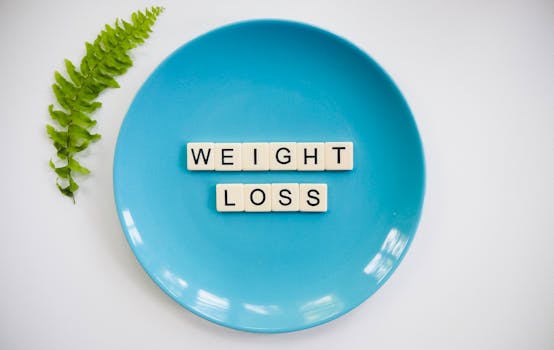Deciding between injectable diabetes medications often comes down to understanding how they work and what results you can expect. If you’re comparing these two popular options, the phrase trulicity vs ozempic is commonly searched by people wanting clear, practical differences about dosing, safety, and weight outcomes.
Ozempic vs Trulicity: How they compare
At a glance, both drugs are GLP‑1 receptor agonists that lower blood sugar and can promote weight loss, but they are different molecules with different dosing schedules. For readers wondering about the basic difference between ozempic and trulicity: Ozempic is semaglutide, while Trulicity is dulaglutide. That answers the question is trulicity a semaglutide and clarifies is trulicity the same as ozempic — they are in the same drug class but are not the same drug.
Mechanism, dosing, and dosing conversions
Both medications mimic the incretin hormone GLP‑1 to increase insulin secretion and slow gastric emptying. For a donor review on the class, see the GLP‑1 receptor agonists overview: GLP‑1 receptor agonists. Trulicity dosing to ozempic switching guidance requires medical supervision; there isn’t a universally accepted trulicity to ozempic conversion chart because patient response, prior dose, and renal function influence the appropriate starting dose when switching from Trulicity to Ozempic.
Effectiveness and weight results
Many patients ask about trulicity vs ozempic weight loss. Clinical trials and real‑world reports suggest semaglutide (Ozempic) tends to produce greater average weight loss than dulaglutide (Trulicity) at equivalent glucose‑control doses, but individual results vary. If weight change is a primary goal, discuss ozempic v trulicity with your clinician; they can balance glucose control, side effects, and goals.
Safety and common side effects
Common side effects for both include nausea, vomiting, diarrhea, and occasional injection‑site reactions. Serious but rare concerns include pancreatitis and gallbladder disease. If you’re considering switching from trulicity to ozempic, your clinician will assess tolerance and any adverse events. Questions like can you take trulicity and ozempic together are important — generally, combining two GLP‑1 agonists is not recommended because of overlapping effects and side effects; medical guidance is essential.
Cost, access, and practical differences
People often compare trulicity vs ozempic cost and trulicity vs ozempic dosage when planning treatment. Pharmacy prices, insurance coverage, and manufacturer coupons differ, so out‑of‑pocket cost may swing in either direction. Dosage forms also differ: Trulicity is offered as a weekly prefilled pen at fixed doses, while Ozempic is a weekly pen with up‑titration schedules. Your provider can explain trulicity vs ozempic dosage specifics for your situation.
Comparisons with other drugs and prescriber decisions
Some readers broaden the question to ozempic vs trulicity vs jardiance. Jardiance is an SGLT2 inhibitor, a different class that lowers glucose by promoting urinary glucose excretion and has proven cardiovascular and renal benefits. For a closer look at how Jardiance compares with GLP‑1 options, you can read our comparison page: Jardiance vs Ozempic comparison. Choosing between GLP‑1s and SGLT2s depends on heart and kidney status, weight goals, and side‑effect profiles.
Switching, titration, and practical tips
If you’re switching from trulicity to ozempic, plan for a provider‑led transition. A clinician will consider your current Trulicity dose, how well your glucose is controlled, and any side effects to select an initial Ozempic dose and titration schedule. Many patients and clinicians ask about trulicity dosing to ozempic specifics and consult published guidance or specialist advice rather than relying on a simple trulicity to ozempic conversion chart.
Finally, is it safe to combine therapies? As mentioned, can you take trulicity and ozempic together is generally answered with caution: simultaneous use of two GLP‑1 agonists is typically avoided. However, combining different classes (for example, a GLP‑1 with an SGLT2 like Jardiance) is sometimes recommended for complementary benefits, depending on the patient’s comorbidities.
- Talk with your healthcare provider about individual risks and benefits.
- Insurance and manufacturer programs affect trulicity vs ozempic cost—check both before starting.
- Expect GI side effects during initial titration; report severe symptoms like abdominal pain promptly.
Q: Is Trulicity the same as Ozempic?
No. Trulicity (dulaglutide) and Ozempic (semaglutide) are both GLP‑1 receptor agonists but are different molecules with different potency, dosing, and clinical profiles.
Q: Can you take Trulicity and Ozempic together?
Generally no — combining two GLP‑1 agonists is not recommended because of overlapping effects and increased side‑effect risk. Discuss alternative combinations, such as pairing a GLP‑1 with an SGLT2 like Jardiance, with your clinician.
Q: How do I switch from Trulicity to Ozempic?
Switching from Trulicity to Ozempic should be done under medical supervision. Your clinician will determine an appropriate starting Ozempic dose and a titration schedule based on your current dose, glucose control, and tolerance.






